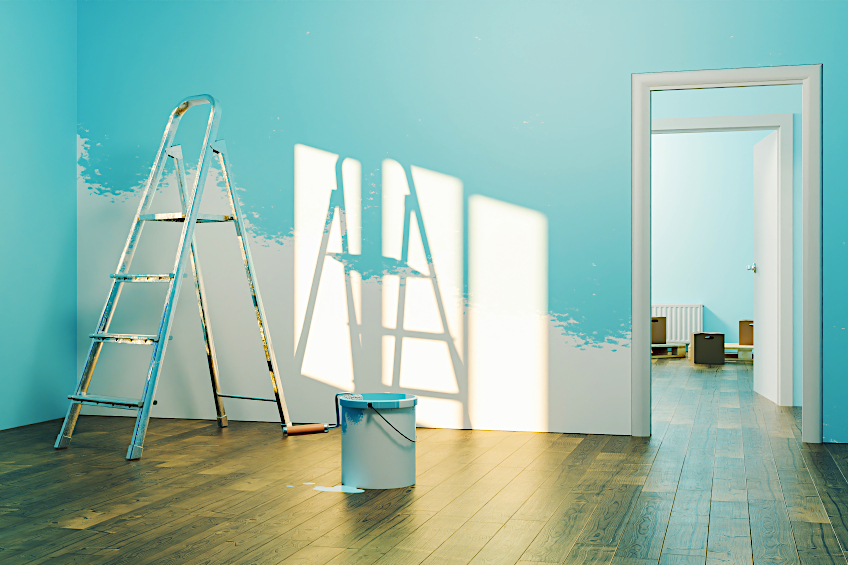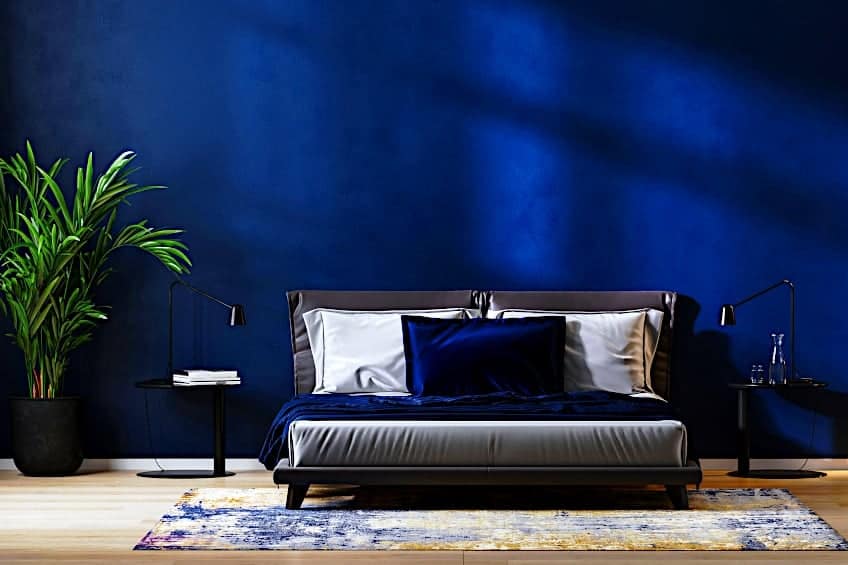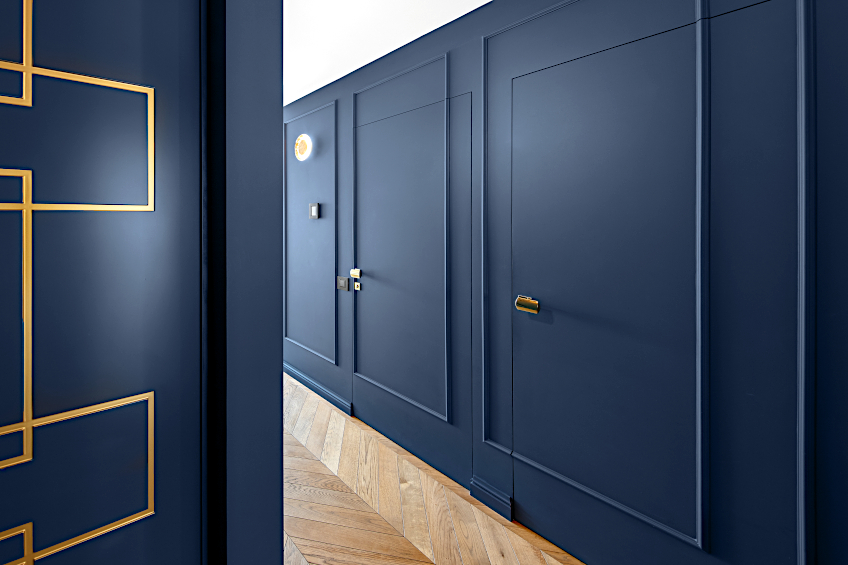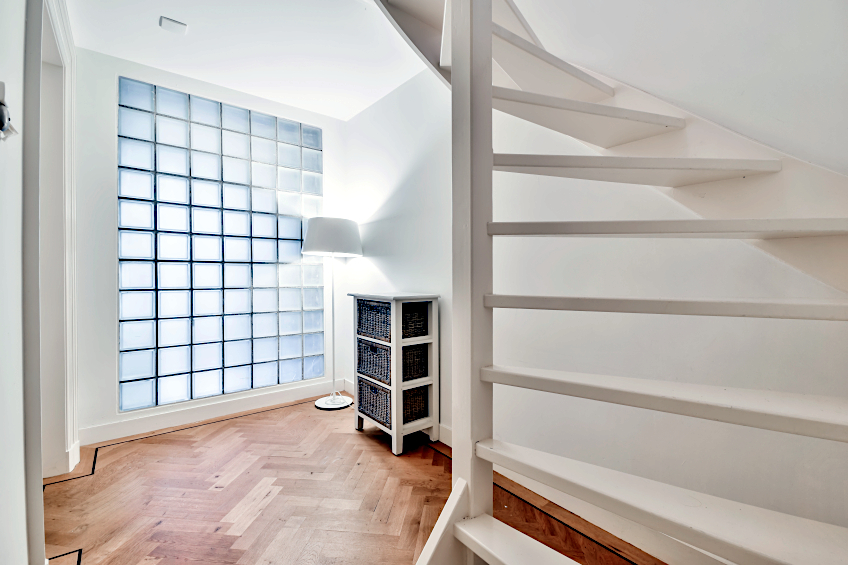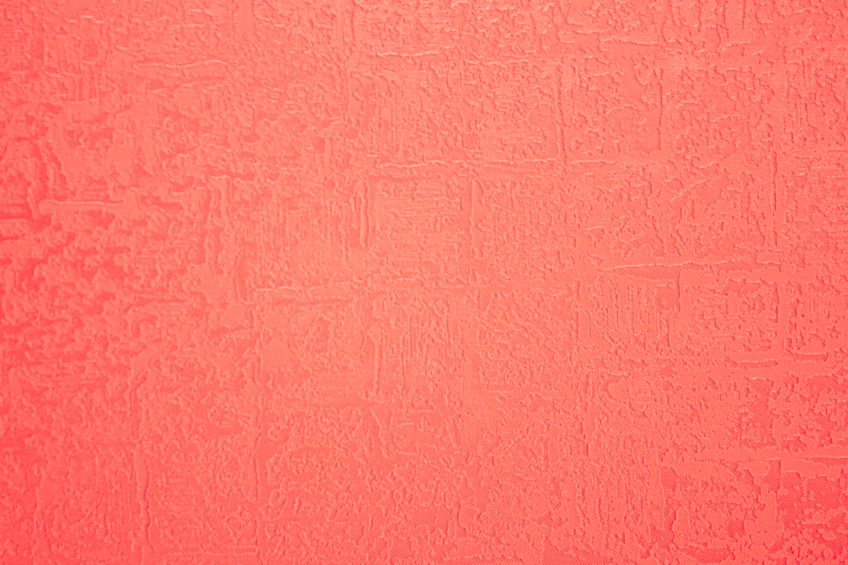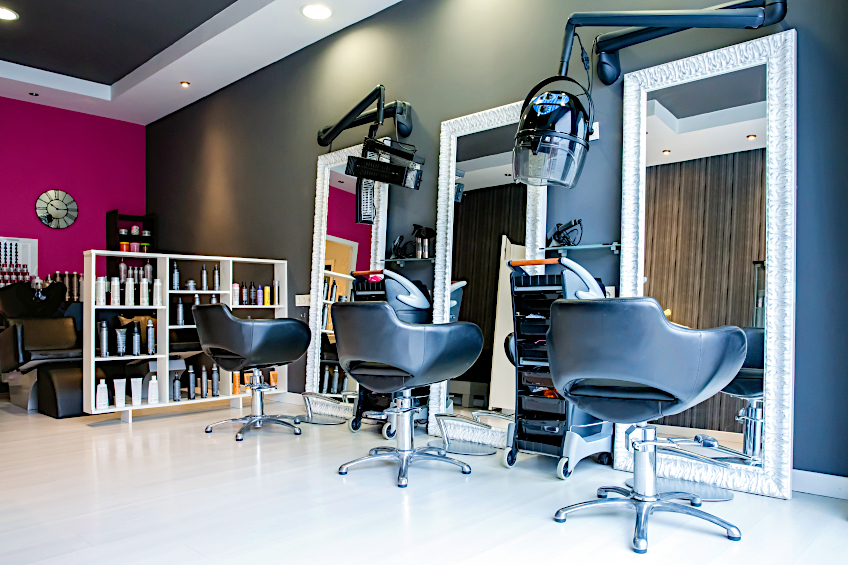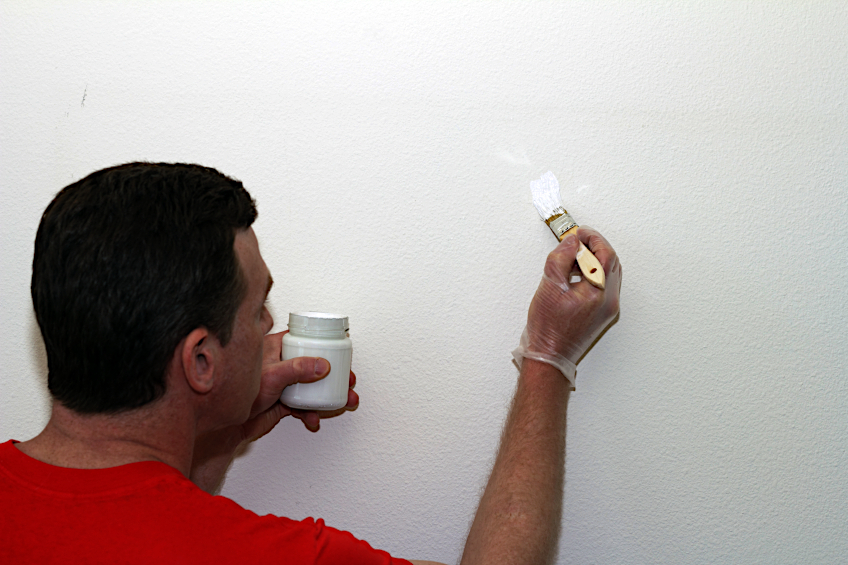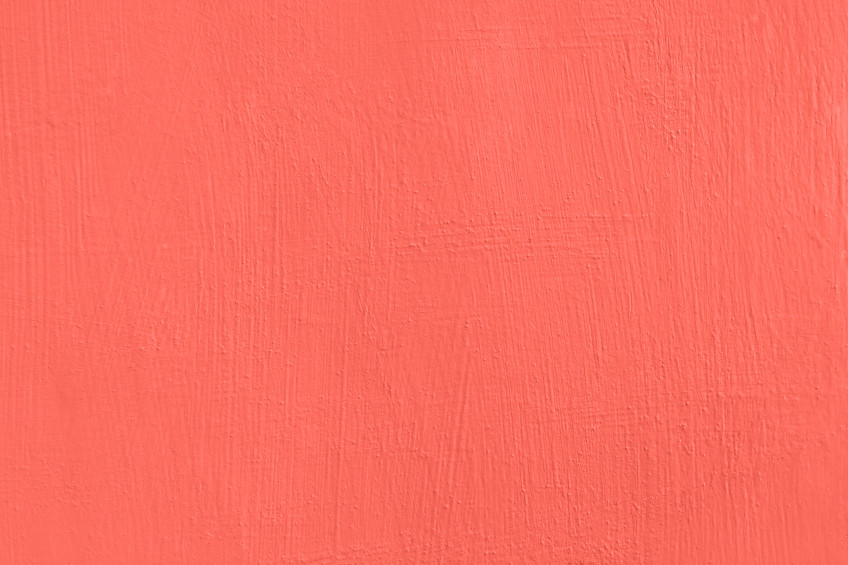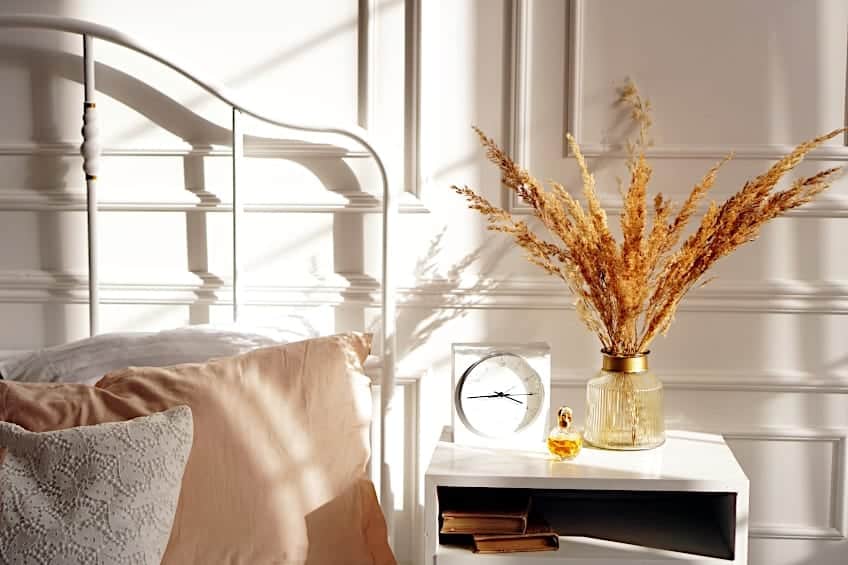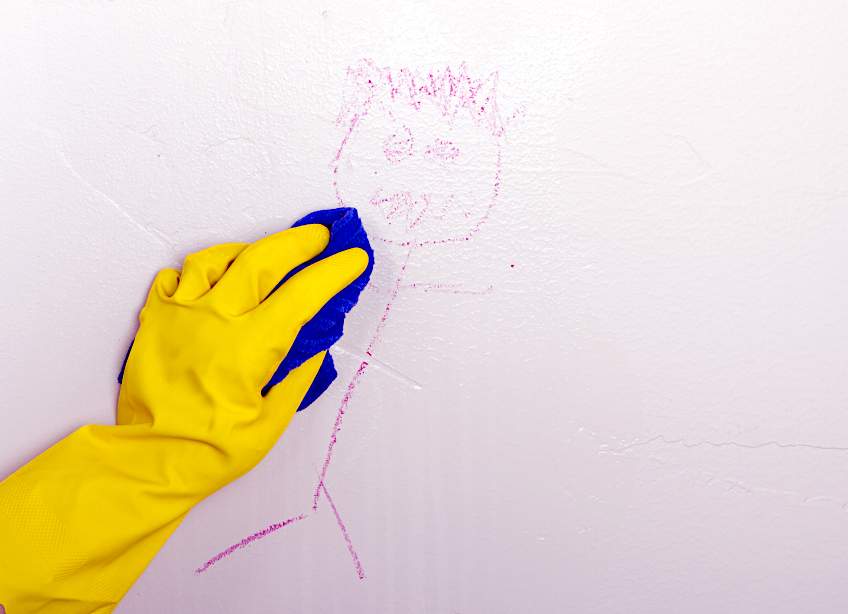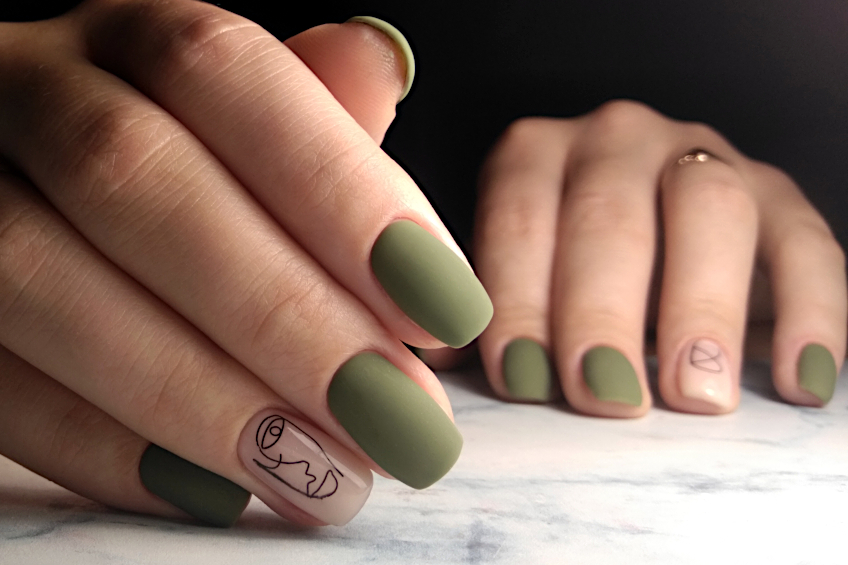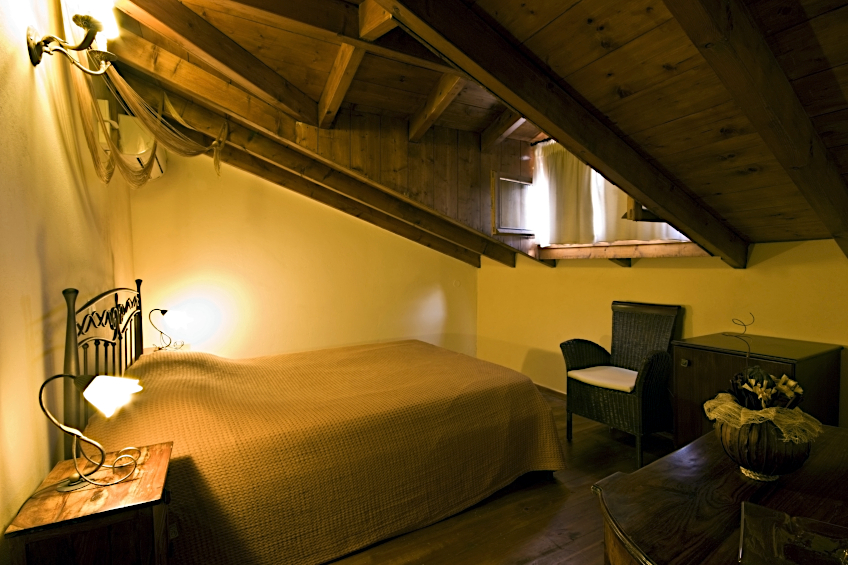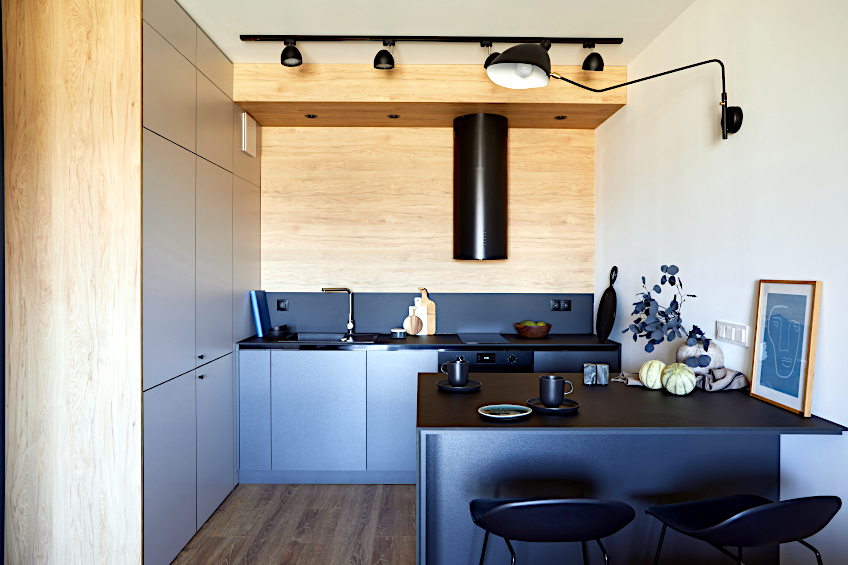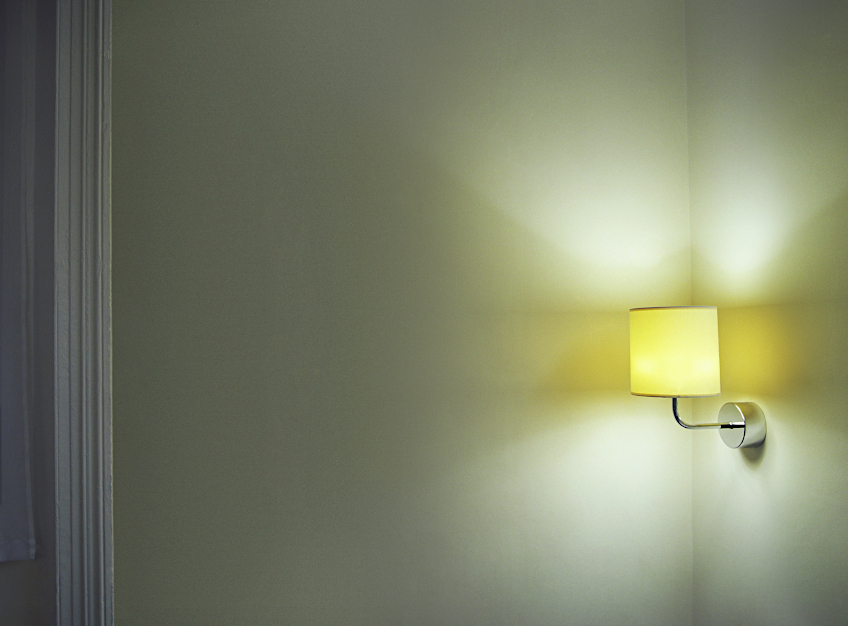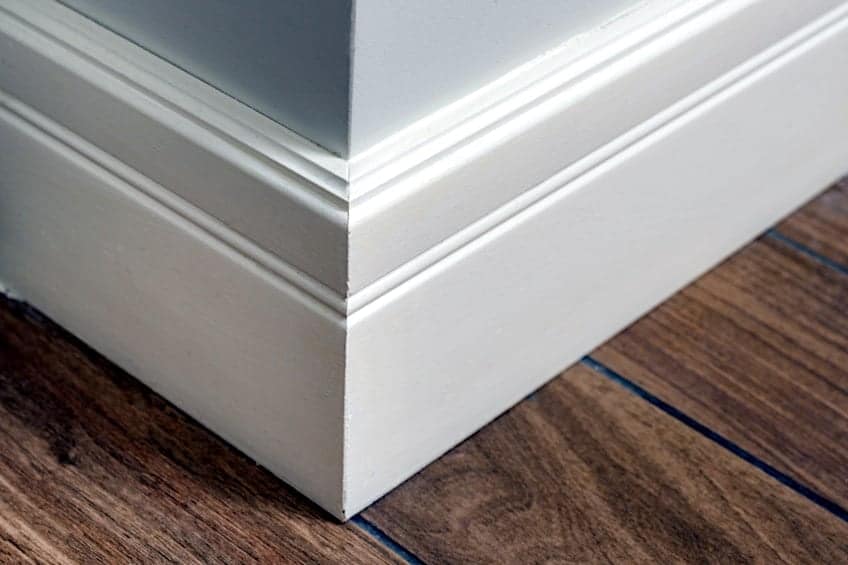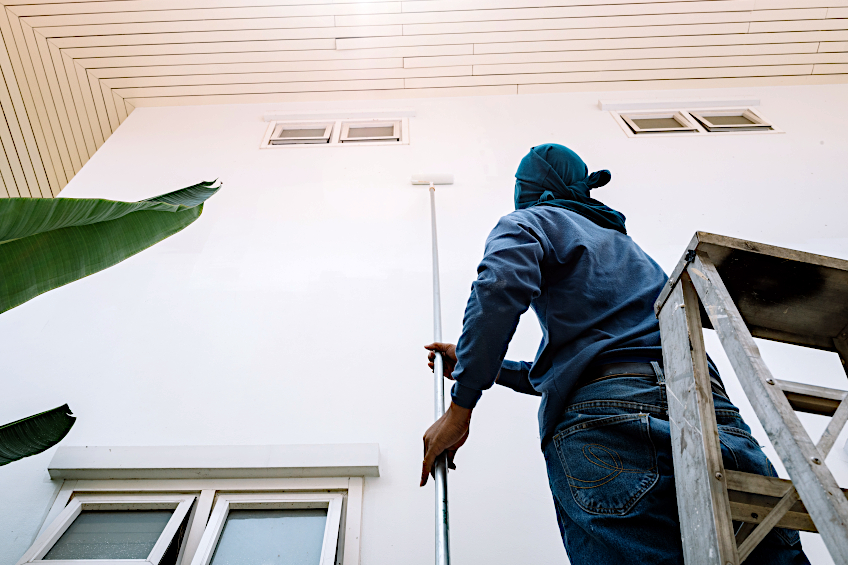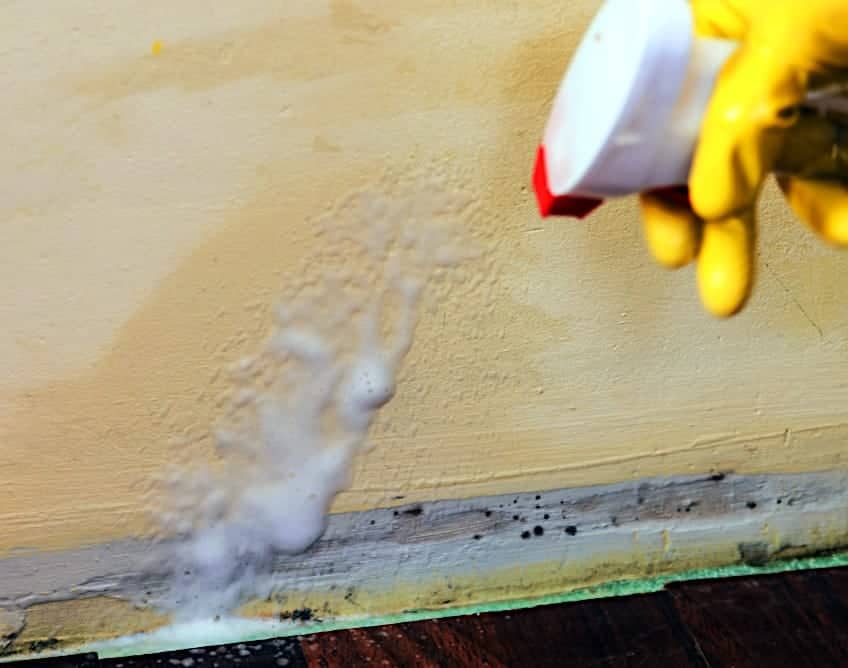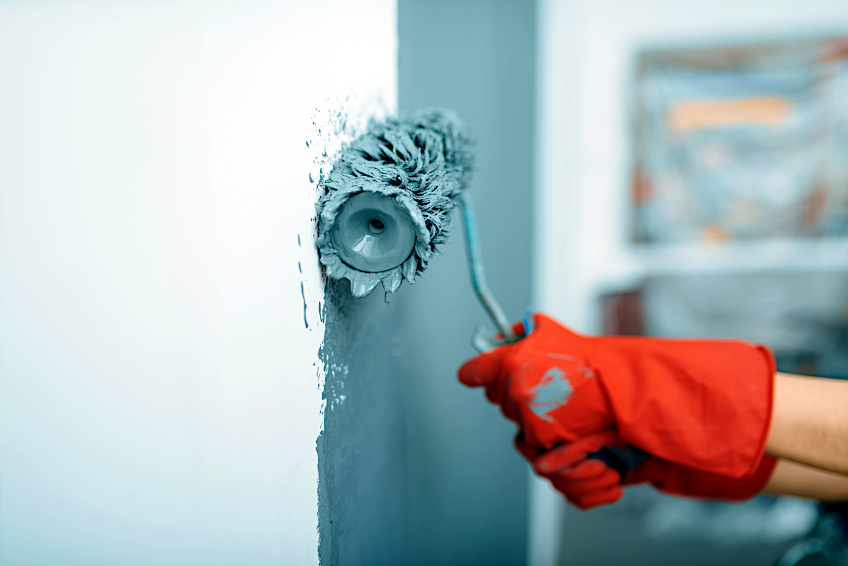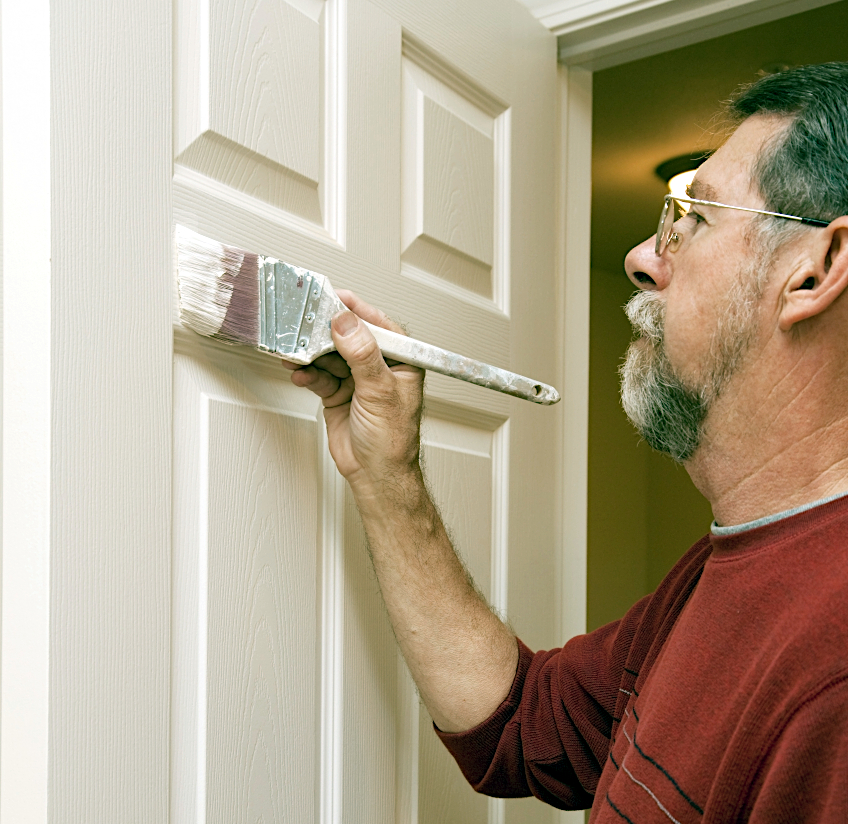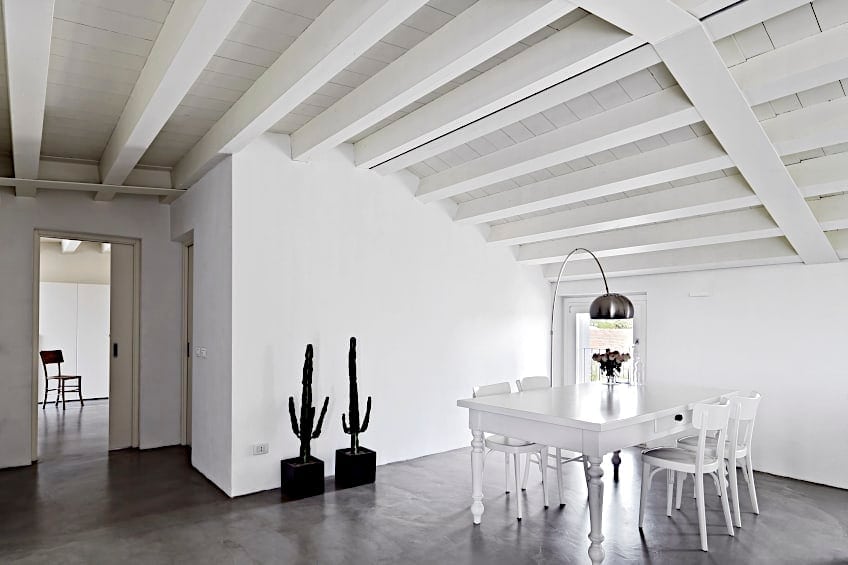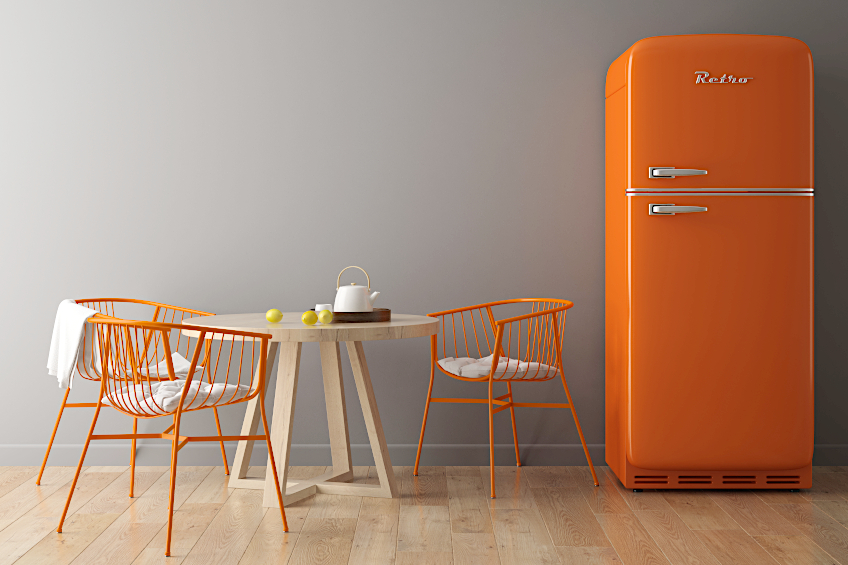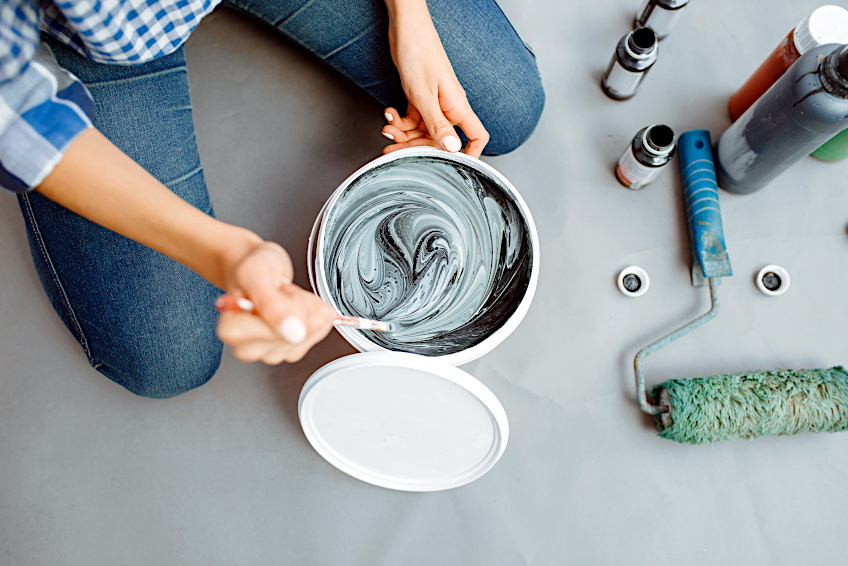Flat vs. Satin Paint – Coating Texture and Finish Options
This post may contain affiliate links. We may earn a small commission from purchases made through them, at no additional cost to you. You help to support resin-expert.com
Choosing a paint can be tough. There are so many colors and textures to choose from that it can be difficult to choose just one color or tone for your project. Some of the most popular textures these days are flat paint and satin paint, which are both excellent-looking finishes with their respective advantages and disadvantages. When it comes down to it, you should consider which paint suits your application and personal taste best, and of course which paint looks better in your chosen environment. To help you make your choice, we’ve prepared a short flat vs. satin paint comparison, as well as some of their respective pros and cons.
Table of Contents
Flat vs. Satin Paint
The flat vs. satin paint debate has been going on for a long time, and for good reason. Not only are these paints similar in the finish but their durability and adhesion quality are pretty close too. Depending on where your workpiece will be situated, your lighting situation, and your personal preferences, either of these finish types could be a good choice.
What is the key difference between satin and flat paint, though?
The primary difference between satin and flat paint is the type of finish they provide. Satin paint, as the name would suggest, has a bit of shine to it (much the same way that the silky material does), which makes it a great paint to use in areas that have loads of natural light during the daytime.
Flat paint, on the other hand, is essentially the same in chemical composition as satin paint but without the sheen effect. Flat paint interacts with light differently, as it doesn’t reflect it or have a glossy overtone.
This makes flat paint the ideal choice for applications where an understated or muted feel is what you’re going for.
The nice thing about both of these finishes is that they’re pretty common, which means that they’re both relatively inexpensive and easy to find. This means that finding various colors and qualities of both satin and flat paint is super easy, and you can shop around to get the best deal and/or find the color that best suits your intended application.
Does this mean that satin and flat paint can be used interchangeably? Well, yes and no.
Satin and flat paint have some inherent characteristics that you should familiarize yourself with in order to get the most out of your paint and workpiece. Should you choose satin or flat paint for your workpiece then? Well, below are some of the key differences between the two that should help you choose whether satin or flat paint is the right choice for your next project.
The Difference Between Satin and Flat Paint
What is the difference between satin and flat paint? As we mentioned previously the primary difference between flat and satin paint is that one has a sheen finish and the other does not. However, there are a few other key characteristics that differ between the two that you should know about before making your choice. At the end of the day, even though these paints are similar, they can always be used interchangeably, as you’ll see below.
| Characteristic | Satin Paint | Flat Paint |
| Finish | Light Sheen | Matt Finish |
| Appearance | Light sheen and strong color | No sheen strong color |
| Coverage | Decent coverage | Great coverage |
| Durability | Extremely durable and elastic | Good durability not as elastic |
| Cost | Reasonably priced | (Relatively) Cheaply priced |
| Ease of use | Can be challenging to apply and maintain due to sheen finish | Exceedingly easy to apply and repair due to flat finish and dry time |
| Maintenance | Able to resist wear and tear in highly trafficked areas well. Is extremely easy to clean | Not particularly resistant to damage. Needs to be maintained more often and is removed easily |
Satin Finish
What is the difference between satin and flat paint? Some people describe satin as a high-sheen finish, but in reality, it’s not actually that reflective. Out of all of the finishes available on the market, satin paint probably has the least potent sheen reflecting just enough light to provide that slight shine we all know and love.
Most paints these days are acrylic based, which means they consist of pigments that have been suspended in acrylic polymer with binders. The more binders that are present in the composition of paint, the glossier it tends to be. As you’ve probably guessed then, satin paints contain a bit more binder compared to other types of finishes. The additional amount of binder is also what allows the paint to have a higher degree of elasticity compared to other paint types. The elasticity is what allows the paint to retain its shape and adhesion to a workpiece.
This allows it to work well in highly trafficked areas, which is why they’re a common sight in hallways and conference areas.
The additional binder present in the paint’s composition means that it reflects light well, but it also has a couple of downsides to it. Sheen paints can be a bit more challenging to apply compared to flat and matt paint finishes. Why, you ask?
Well, satin and other high-sheen finishes are more challenging to blend, as areas that have dried already do not mix well with freshly applied paint, so touch-ups at a later date can be quite visible.
Essentially, this means that touching up an area that has been damaged or faded can prove to be frustrating, especially if you’ve used a high-glass formula. You see, the new coat will have all of its luster while the areas around the touch-up will likely have lost a noticeable amount of its sheen over time, making the patched area rather noticeable.
- Rot, mold, and moisture resistant
- Is Easy to keep clean
- Extremely durable with indoor applications
- Decent range of coverage
- Versatile
- Reflects light well
- Difficult to spot-repair
- Can be challenging to apply
- Tends to be more expensive
- Can be difficult to remove in some cases
- Touched-up areas stand out
Flat Finish
What is the difference between flat and satin paint then? Well, as we mentioned previously, satin finishes are characterized by their lustrous finish and a high degree of elasticity once applied to a surface. Flat paint can be characterized as the opposite of satin paint as it does not have a reflective finish and isn’t nearly as elastic as satin finishes tend to be.
While one might think the lack of a sheen finish makes this paint undesirable, flat paint actually produces a uniform finish, which tends to fit well with minimalist aesthetics. This paint is not affected by natural or artificial light, ensuring a consistent uniform finish that looks just as good in the morning light as it does in the evening!
The formula for flat paint is a sort of the inverse of satin paint. While satin paint contains loads of binder to create a shiny look, flat paint contains very little binder and instead makes up for this with an abundance of pigment. This ensures that the color of flat paint is well pronounced regardless of the material and/or shape of the surface it’s applied to.
However, the lack of binder in its composition means that it lacks some of the qualities that make satin paint so popular.
Which qualities, you ask? Well, the abundance of binder in satin paint’s makeup means that it has a degree of elasticity and durability that other finish types simply don’t have. Flat paint, due to its comparative lack of said binder, tends to be quite stiff and rigid.
This can make cleaning flat paint a bit challenging, as scrubbing with too much pressure, or using chemicals that don’t agree with it could result in your paint being removed from its surface. However, because satin paint doesn’t have a sheen finish it is significantly easier to blend and touch in the event that you accidentally end up removing some while cleaning.
- Easy to use
- Conceals imperfection on the surface of your workpiece
- Great coverage per square foot
- Blends easily
- Easy to repair
- Color is more pronounced
- Often requires fewer coats compared to satin paint
- Not very durable
- Does not stretch with surfaces
- Can be removed easily
- Can be challenging to clean
- Not resistant to the effects of mold, corrosion, or moisture
Key Differences Between Satin and Flat Paint
Knowing the differences in chemical composition between flat and satin paint is all well and good, but you should familiarize yourself more intimately with these paint types. Why? Well, they’re fairly commonly used paints which means that the probability of you needing to use one or both of these paint types is relatively high.
This being said, here are a few of the key differences between satin and flat paint that you should know before you start using them.
Overall Appearance
As we mentioned previously the key difference in appearance between satin and flat paint is the amount of sheen. Satin paint contains more binder and therefore has a more prominent sheen compared to flat paint. Flat paint has a matt finish, which tends to look a bit powdery if applied incorrectly or if a poor-quality paint is used.
Right off the bat, this makes satin paint sound more appealing than flat paint.
However, a lot like trying to take a picture outdoors, satin paint is almost entirely at the mercy of natural light. The way the color is presented, and what the light is bouncing off of, can affect the perceived color of your satin finish, which can be a bit frustrating at times.
On the other hand, due to how satin paint interacts with both natural and artificial light, it tends to make spaces feel bigger. Satin paint colors also tend to have a deeper feel to them compared to flat ones due to the reflective quality of their finish, making the hues feel palpable.
These qualities make satin paint a top pick for confined spaces.
Flat paint on the other hand tends to be a bit more simplistic, at least in comparison to satin paint. While you’ll have to carefully determine how light will interact with your surface when using satin paint, flat paint colors are comfortingly consistent. They look the same from different angles and tend to undergo little perceptual changes in low and high lighting conditions.
One visual difference between these two paints that may be a deciding factor for you is their ability to conceal imperfections.
Using satin paint on a surface with loads of imperfections will only highlight said defects, which can ruin the overall look of your workpiece. Flat paint, on the other hand, hides imperfections like dents and chips quite well, making it a crowd favorite for time-sensitive paint jobs.
Finish Texture
People tend to get the wrong idea when it comes to satin paint. Satin paint may have a noticeable shine to it, but they don’t have anywhere near the same amount of sheen that gloss and/or semi-gloss paints do. While you can definitely perceive the light shine of satin finish, it definitely won’t be glimmering or capturing light quite the same way that other paints do.
Another misconception is that flat paints have absolutely no sheen to them at all. Flat paints have a very low sheen to them which is barely perceptible by the naked eye. They still interact with light, just not in the same way that satin paints due thanks to the lack of binder in their composition. This makes their color and overall finish look more consistent.
Does this mean that you should use one instead of the other? Probably not.
It depends entirely on the application, the space your workpiece will be occupying, the color palette you’re aiming for, and the overall aesthetic you’re working towards. Understanding some of the aforementioned characteristics will enable you to choose a color that suits your given scenario.
Overall Durability
When it comes to durability there isn’t much competition between these two paint types. Satin paint is far more durable than its flat counterpart, allowing you to wash, scrub, and even impact the surface it’s applied to without having to worry about your paint chipping or lifting.
Flat paint, on the other hand, does not benefit from this kind of durability.
Why, you ask? Well, flat paint does not have the same amount of binder present in its makeup. Put simply, this means that flat paint is not as elastic as satin paint, and as a result, this is unable to distort and retain its shape. This means that if the surface that flat paint is applied to expands or contracts, the paint will likely crack or split as a result. This makes flat paint a particularly bad choice for spaces like bathrooms and saunas as the removal of mold and/or moisture from a painted surface could very well result in the paint being removed entirely.
Keep in mind that flat paint doesn’t exactly make it easy for you to touch up affected areas either, so using this type of paint in areas that require regular and thorough cleaning probably isn’t the best idea.
Area of Coverage
Coverage is important, regardless of the size of your workpiece. After all, you want good value for your money, right? Well, if you’re interested in good color and coverage then flat paint would be your best bet. The reduced binder means that the pigment is able to spread evenly, ensuring that every coat has a pronounced color.
The opposite is true when it comes to satin paint. Thanks to the fact that satin paint has more binder than pigment, the color tends to spread less evenly compared to flat paint. This means that it could take more coats of satin to get a decent level of coverage than it would with flat paint. On the other hand, you do get that lovely sheen if you choose satin pain, so it feels like a fair trade.
If you’re unsure about which one suits your application, they’re brands that produce “one coat” paints. As the name suggests, these paints only need to be applied once (one coat) to achieve the desired effect. These paints are typically available in both satin and flat finishes, which is great considering that your other choice would be an ultimatum between finish and coverage.
Cleaning and Maintenance
Much like the durability comparison, there isn’t much competition between satin and flat paint in the maintenance department. Satin paint is far easier to clean and maintain once it has been applied compared to flat paint, this is thanks to the high volume of binders present in its composition, and the fact that it has a lower surface friction rating.
Flat paint can be a bit of a hassle to clean and maintain. Why? Well, as we mentioned previously flat paint contains very few binding chemicals and as a result, has very little elasticity. Because of this, the paint is unable to expand and contract along with the surface to which it’s been applied.
As a result, cleaning this paint can result in chipping and scratching depending on the age and quality of the paint in question.
Which Is Easier to Use?
Ease of use is something that can make or break your choice in pain, especially if you have a time-sensitive project. The last thing you want is a fussy paint that won’t blend or spread the way you need it to, so which paint type is easier to use? Well, if you can discern anything from what we’ve mentioned so far, flat paint is hands down the easier paint to work with.
Why? Well, if you’re painting with a brush and roller, you’re going to be overlaying strokes of paint, and since flat paint doesn’t have any shine, it makes for seamless blending with few noticeable brushstrokes. The lack of binder in its makeup means that satin paint spreads really evenly too, which is a good thing when you have a time constraint.
Satin paint on the other hand can be a bit more challenging to apply. Due to the abundance of binders present in its composition, the paint does not spread as easily, often forcing you to make multiple passes over the same area. The volume of the binder also means that the paint does not blend easily, forcing you to work quickly and revisit certain areas to ensure uniformity.
Again, there is a way to cheat the system here. After all, we live in the age of information and technology, so why not use a paint sprayer? Generally speaking, this ensures that you have an even application with every single coat, regardless of the type of paint you’re using. We do recommend getting some practice in beforehand though.
Cost of Paint
Besides ease of use, like most things in modern life, the paint you choose will come down to cost. As you may have guessed, because flat paint provides an objectively less extravagant finish, the price tends to be lower than that of satin paint. How much would you pay for a gallon of flat paint, you ask?
Well, a decent quality flat paint should run you around $5.00 per gallon depending on the brand and quality.
As you can imagine then, due to all of the binders present in its composition, satin paint tends to be a bit more expensive than flat paint. Where you might need around 3 cans of flat paint (around $15,00 worth) to cover a typical room, it would take might take more satin paint to cover the same surface area, and since satin costs around $10,00 to $15,00 per can, you can expect to fork out a bit more money when using satin paint.
Surfaces and Applications
It’s always best to use a paint for applications where its characteristics would be most conducive to the function of that surface. Failing to do so can result in you having to remove and/or replace your initial coat, which can cost you valuable time and money.
Therefore, familiarizing yourself with the characteristics and applications of satin and flat paints can benefit you later on.
What is flat paint used for? Well, applications where the surface will not receive a high amount of foot traffic, and instances where you don’t want to draw too much attention to a surface or workpiece. This is why flat paints typically use on ceilings and other elevated surfaces. These don’t require frequent cleaning and are free from contact with other objects.
What is satin paint used for?
Well, you would usually use satin paint for a workpiece or surface that you want to be eye-catching. Satin paints are used in highly trafficked areas like hallways, bathrooms, kitchens, and pretty much any other space you can think of where you’d want the feel of the space to be “open” and unrestricted.
Is Satin or Flat Paint Better?
There really isn’t a straight answer to this question. Deciding which paint is better depends on the application and depending on what your needs are, each painting could be considered better if it fulfilled those needs. This is why each paint should be used for its intended application to maximize its effectiveness.
Flat paint should be used in applications where the area will not be highly trafficked and does not require regular cleaning. It also works if you’re working on a budget and have a large surface to paint since it’s typically cheaper per gallon compared to its satin counterpart. This being said, it is not great for every occasion.
Satin paint, on the other hand, should be used for applications where you are trying to draw attention to a surface or workpiece.
It interacts with natural and artificial light well too, which means it can be used in sprawling spaces, or it can be used in confined spaces to make them feel bigger. It Is pretty difficult to blend and touch up though, so it too isn’t universally applicable.
Can You Remove the Gloss From Satin Paint?
Yes, you can remove the gloss from satin paint and there are a couple of ways to go about it. The easiest way to go about this is to apply a clear flat topcoat to your initial coat, which should neutralize the glossy effect of the satin paint and give you a fairly muted tone.
There are a few other ways to go about it too.
For instance, you could opt for a deglossing product. All that you need to do is apply your paint to your surface, allow it to dry for as long as the deglosser recommends, and then apply the deglosser. This should leave you with a nice matt finish instead of the overly glossy ones that high-end satin paints tend to have these days.
The last way you can go about deglossing your piece is simply to sand the gloss away. Once your paint has been applied, allow it to dry completely. Once dried, go at it with some fine-grit sandpaper until the surface has reached your desired level of sheen.
We recommend practicing and testing on spare material beforehand to avoid damaging the surface of your workpiece.
Is It Possible to Mix Flat and Satin Paint?
It’s possible to mix any paint, as long as the qualities of the paints being mixed are conducive to your desired outcome, and you must ensure that the paints are mixed correctly. This means using a mechanical mixing device, which will ensure that the binders, pigments, and resins are combined correctly.
This process ensures that the paints do not streak against one another. You should also ensure that the colors you will be mixing aren’t too far removed from one another, or you could end up with a color that is nothing like either of them. This being said, while experimenting is fun it’s best to have your paint mired professionally if the stakes are high.
Now that you know what flat paint and satin paint are, what they are used for, some of the differences between them, whether they can be mixed, and which is better, it’s time for you to get out there and put your newfound knowledge to the test. Remember to always work in a well-ventilated area when working with paints that contain potentially harmful chemicals.
Frequently Asked Questions
What Does Flat Paint Mean?
What does flat paint mean? When most of us talk about flat paint, we mean a paint that has no sheen or gloss to it. These paints instead have a matt finish that is used on surfaces like ceilings and display shelving.
When Should You Use Flat Paint?
Wondering when you should use flat paint? Flat paint can be used in any application where you need to hide imperfections in the surface of a workpiece, or where the area will not experience a lot of traffic.
Does Flat Paint Scratch Easily?
Flat is not extremely durable but it should be able to handle light abrasion without any noticeable damage being visible. This being said, you should do your best to wash surfaces coated with flat paint carefully as it is not resistant to moisture.
What Is the Difference Between Flat Paint and Satin Paint?
What is the difference between flat paint and satin paint? The key difference between flat paint and satin paint is the amount of binder present in their respective composition. The more binder a paint has in it the shinier it is. Satin paint has an abundance of binder in its makeup, and therefore is glossier, more elastic, and a bit more challenging to use compared to flat paint.


